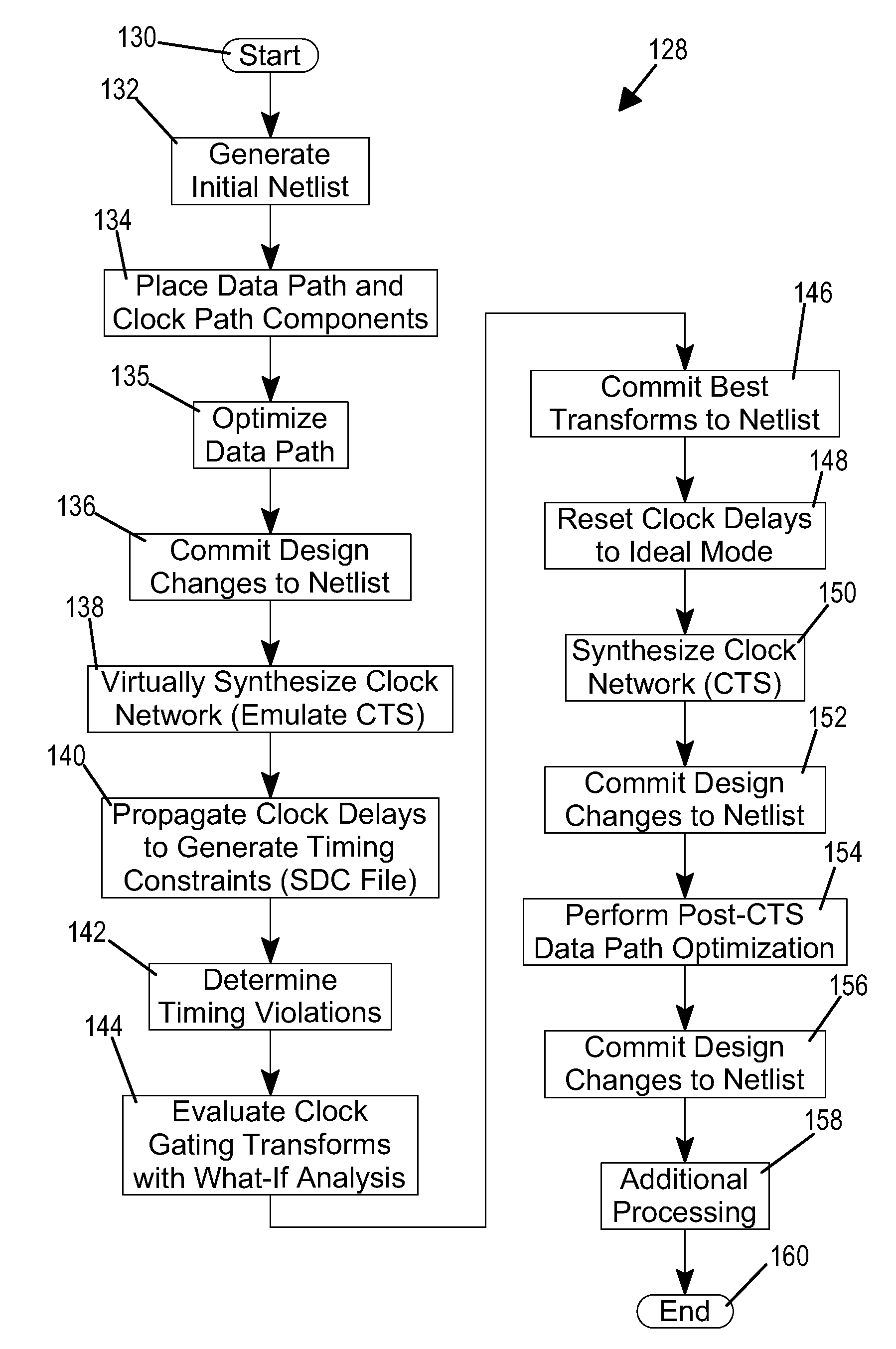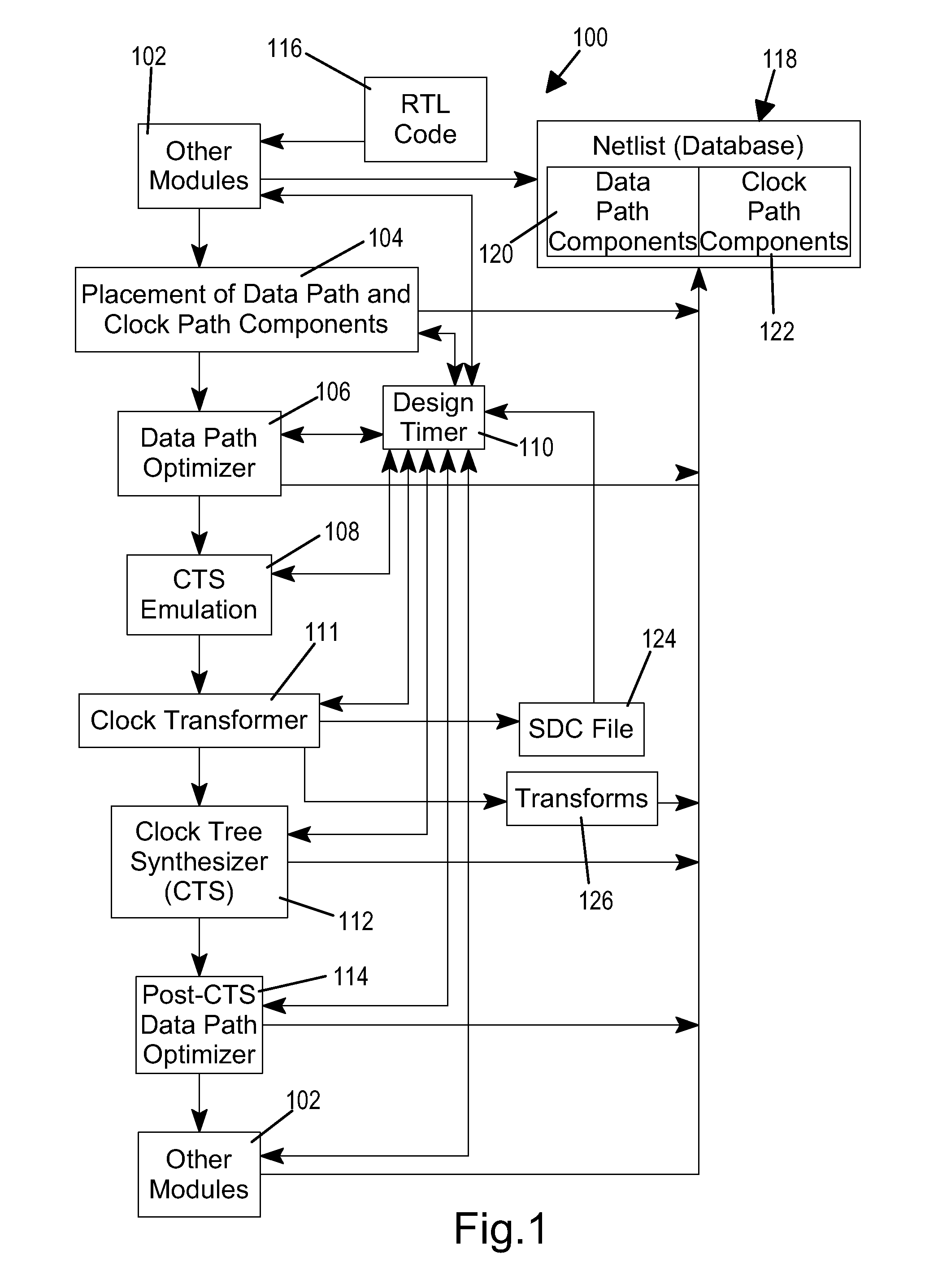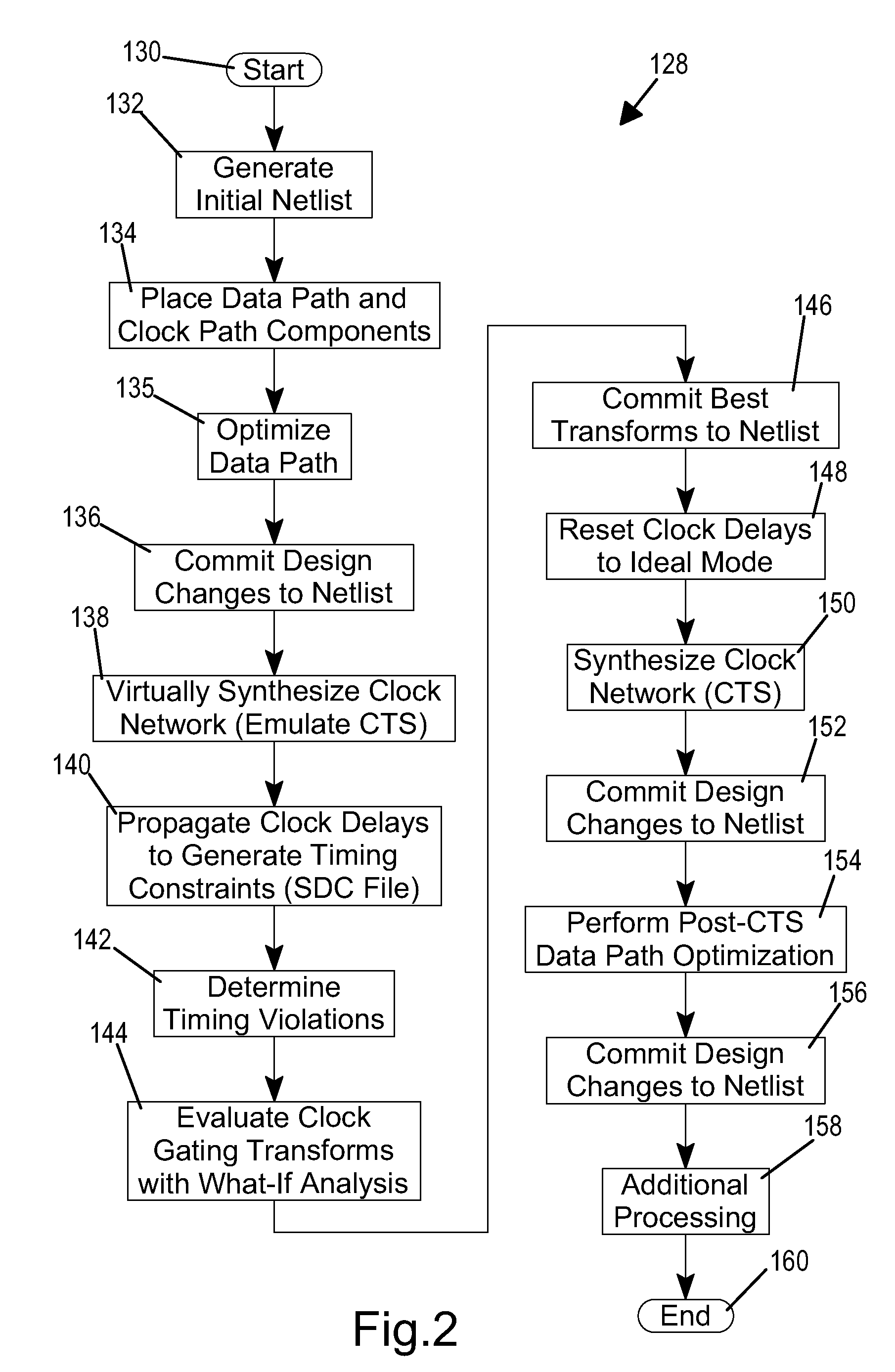Achieving Clock Timing Closure in Designing an Integrated Circuit
a technology of clock timing and integrated circuit, which is applied in the direction of computer aided design, program control, instruments, etc., can solve the problems of clock timing violations, clock may be so restricted, and signals that do not properly synchronize the data path components are said to have clock timing violations, etc., to achieve the effect of enhancing overall design convergen
- Summary
- Abstract
- Description
- Claims
- Application Information
AI Technical Summary
Benefits of technology
Problems solved by technology
Method used
Image
Examples
Embodiment Construction
[0011]Tools for designing an integrated circuit typically include several modules (representing design “stages”) that perform various functions of the design process. Schematic diagram 100, FIG. 1, shows an exemplary set of such modules 102-114 (used in a simplified flow of a design process similar to that available in the “Cadence Encounter Digital IC Design Platform”) that includes additional modules, features or functions (described below) that enable more rapid and efficient fixing of clock timing violations, such as clock gating setup violations, and more rapid and efficient overall design convergence than is available in the prior art. These advantages are primarily achieved by a design process that emulates clock tree synthesis (CTS) at an earlier point in the design flow than the point at which actual CTS is performed to instantiate the clock circuitry. In other words, the clock tree, or clock network, is virtually synthesized, so it becomes possible to calculate clock delay...
PUM
 Login to View More
Login to View More Abstract
Description
Claims
Application Information
 Login to View More
Login to View More - R&D
- Intellectual Property
- Life Sciences
- Materials
- Tech Scout
- Unparalleled Data Quality
- Higher Quality Content
- 60% Fewer Hallucinations
Browse by: Latest US Patents, China's latest patents, Technical Efficacy Thesaurus, Application Domain, Technology Topic, Popular Technical Reports.
© 2025 PatSnap. All rights reserved.Legal|Privacy policy|Modern Slavery Act Transparency Statement|Sitemap|About US| Contact US: help@patsnap.com



